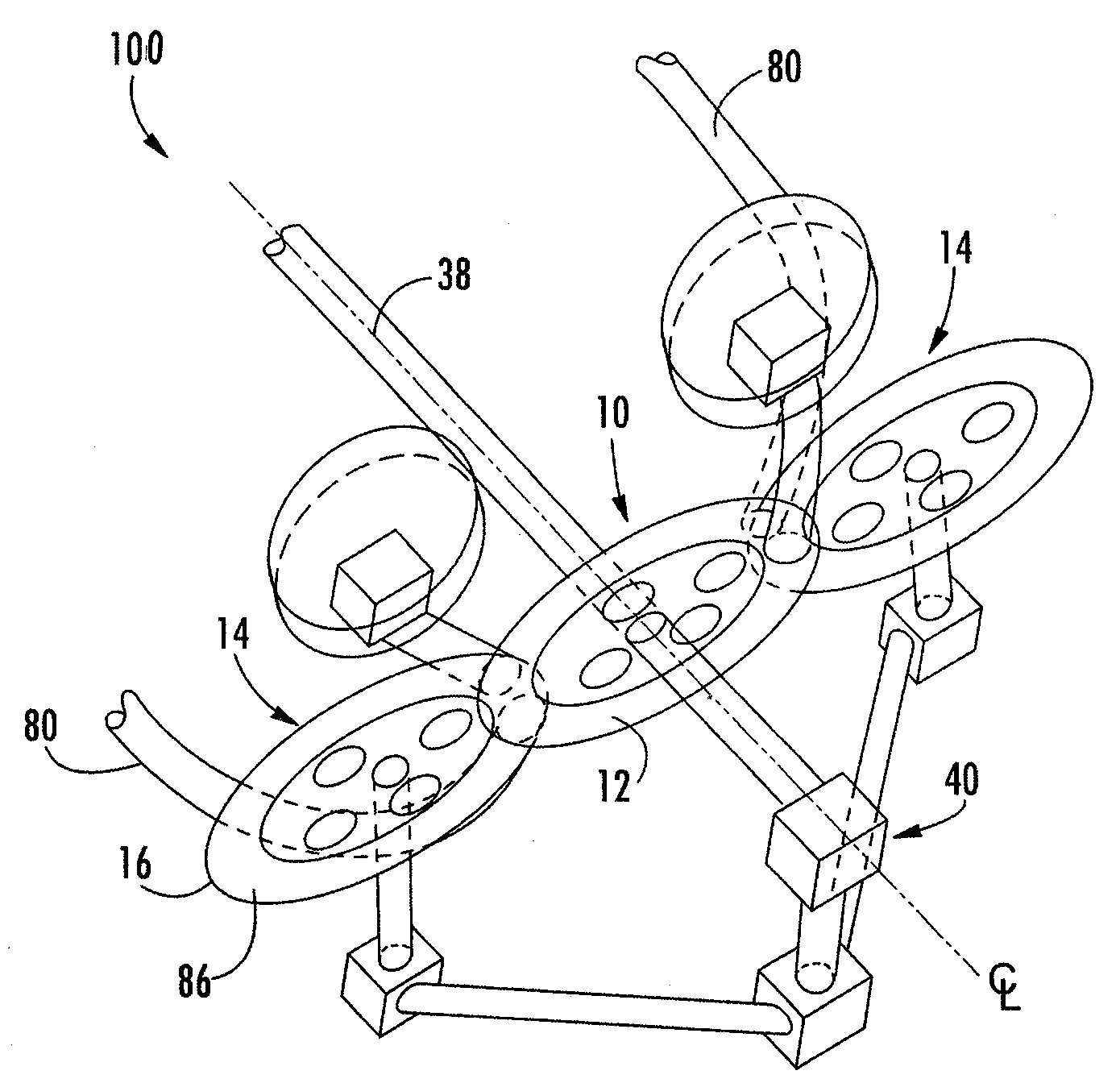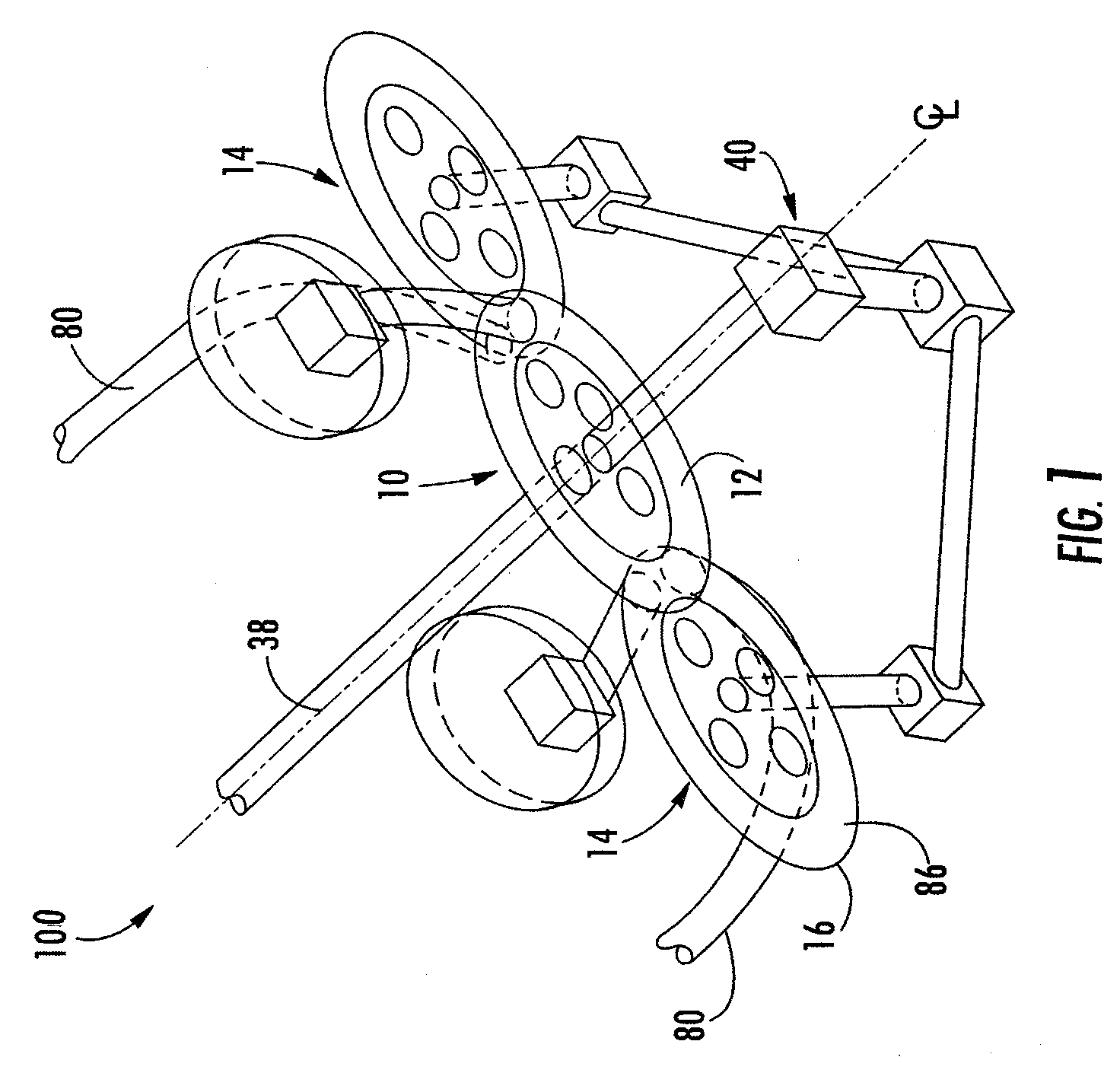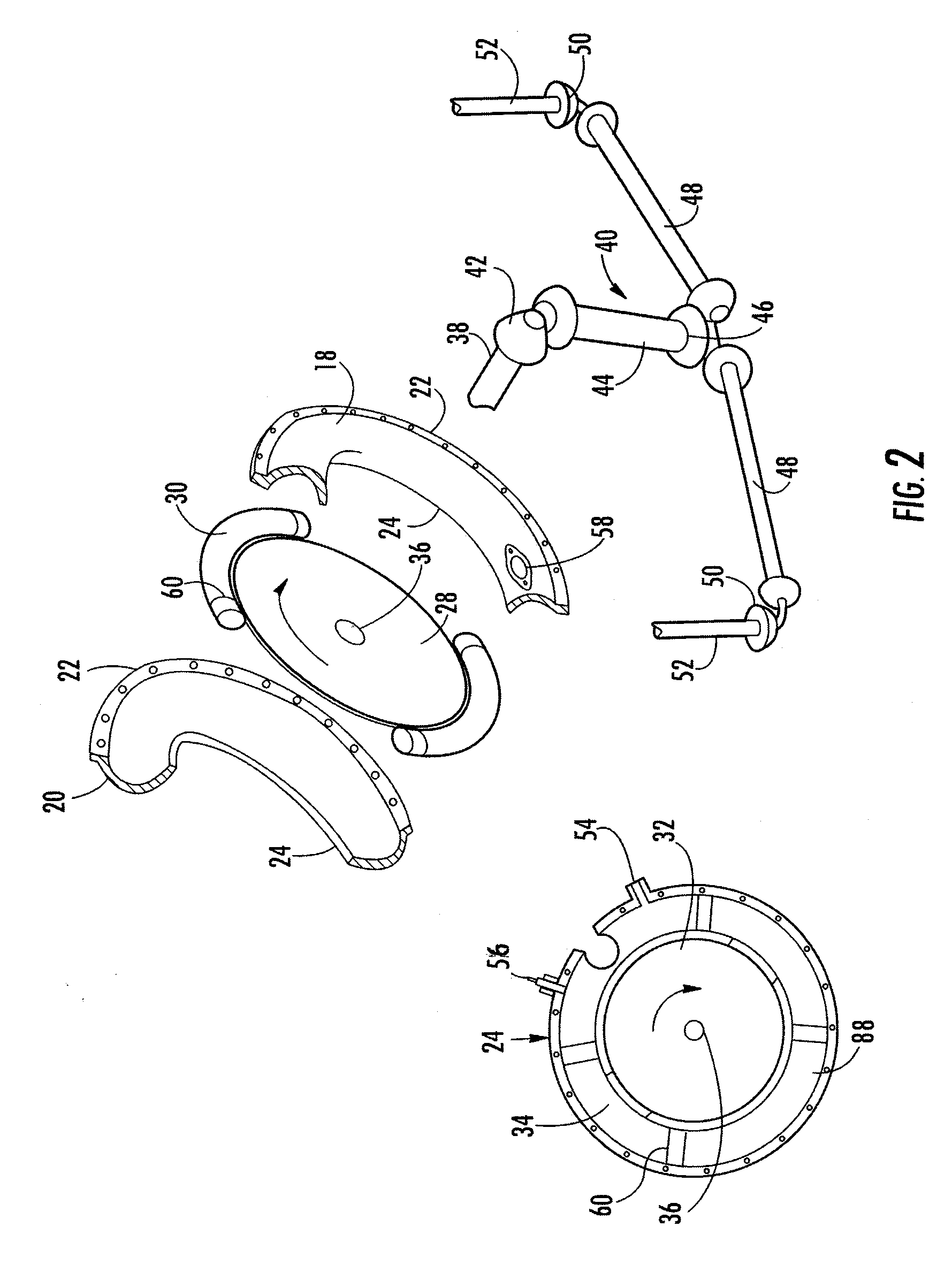Internal combustion engine with toroidal cylinders
a technology of internal combustion engine and toroidal cylinder, which is applied in the field of machines, can solve the problems of long run time, reduced efficiency, and reduced efficiency of internal combustion engine, and achieves the effects of reducing emissions, superior performance, and lightening weigh
- Summary
- Abstract
- Description
- Claims
- Application Information
AI Technical Summary
Benefits of technology
Problems solved by technology
Method used
Image
Examples
Embodiment Construction
[0037]While the present invention is susceptible of embodiment in various forms, there is shown in the drawings and will hereafter be described a presently preferred embodiment with the understanding that the present disclosure is to be considered an exemplification of the invention and is not intended to limit the invention to the specific embodiments illustrated.
[0038]Referring to FIGS. 1 and 2, the internal combustion engine with torodial cylinders (100) is illustrated. In general, the engine includes a vertically oriented central power ring (10) having a torodial shaped cylinder (12). The power ring (10) is intersected by a pair of horizontally oriented charge rings (14) also having torodial shaped cylinders (16). The charge rings are positioned to intersect opposite quadrants of the power ring (10) at substantially right angles. The power ring (10) is comprised of two substantially similar halves, one being a front engine ring member (18) and the other being a rear engine ring ...
PUM
 Login to View More
Login to View More Abstract
Description
Claims
Application Information
 Login to View More
Login to View More - R&D
- Intellectual Property
- Life Sciences
- Materials
- Tech Scout
- Unparalleled Data Quality
- Higher Quality Content
- 60% Fewer Hallucinations
Browse by: Latest US Patents, China's latest patents, Technical Efficacy Thesaurus, Application Domain, Technology Topic, Popular Technical Reports.
© 2025 PatSnap. All rights reserved.Legal|Privacy policy|Modern Slavery Act Transparency Statement|Sitemap|About US| Contact US: help@patsnap.com



